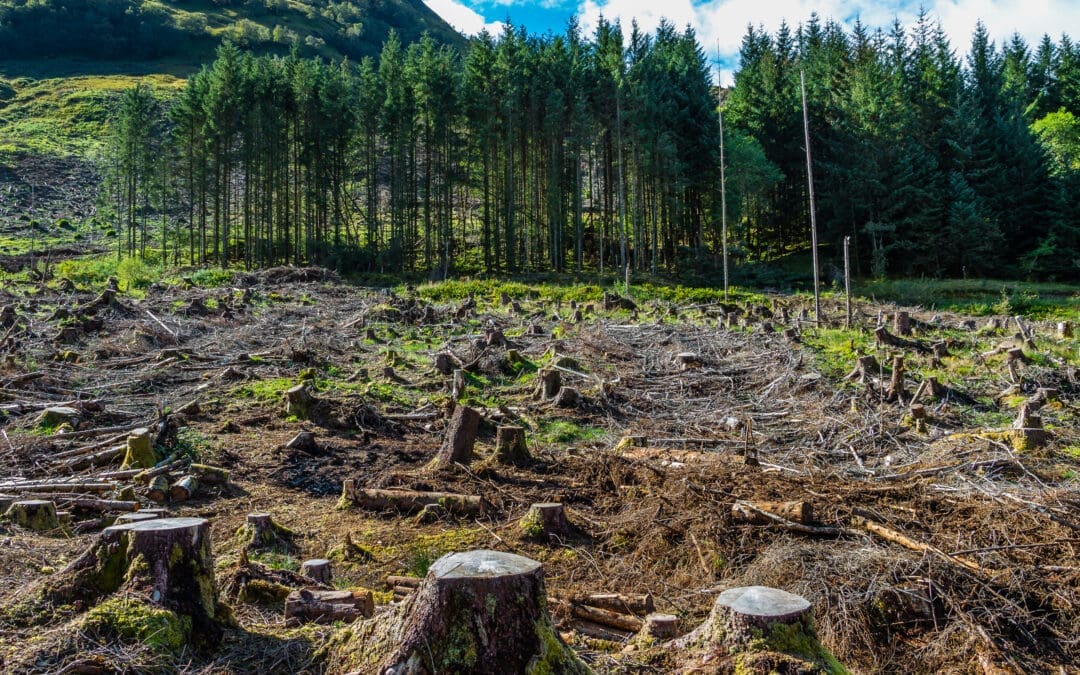On April 21st, our webinar on forced labor in cotton supply chains brought together leaders from Responsible Sourcing Network and Fashion for Good to explore how industry-wide tools and supply chain engagement can help identify and mitigate risks of forced labor.
With apparel businesses facing increased demands for transparency, fueled by recent scrutiny over Xinjiang cotton, forced labor should be a top priority for any apparel brand with cotton in the supply chain.
Moderated by Kate Larsen, Director of SupplyESChange and on-the-ground expert when it comes to Uyghur forced labor, all speakers gave great insights into how brands can meaningfully address forced labor in cotton supply chains. Read on for three key takeaways from our webinar and an exclusive audience Q&A session with our panelists.
Key Takeaways
The Choke Point Occurs at the Mill-Level
There is a common perception that addressing forced labor in cotton supply chains means we have to prioritize efforts on the most upstream source – the farm or gin. However, according to Patricia Jurewicz, Founder of Responsible Sourcing Network, the key is to focus on critical “choke points” in the cotton supply chain.
In the complex cotton supply “web,” there are two points where traceability is lost. These are the textile and spinning mills. Here, cotton yarn is mixed from a variety of global sources into large sheets that are then sent downstream for further production. Once this process occurs, is it impossible to determine origin without tracing isotopic signatures.
To drive forced labor out of cotton production, companies must start implementing due diligence verification programs with cotton yarn spinners. Using tools like the new YESS (Yarn Ethically and Sustainably Sourced) Initiative, brands can empower yarn spinners to implement effective due diligence systems when it comes to their own yarn sourcing.
Technology Prioritizes Remote Vs. Onsite Engagement
Enabling textile and spinning mills to adopt more responsible cotton sourcing practices will be pivotal in tackling forced labor. Remote assessment tools such as the YESS forced labor risk screen act as a “gatekeeper” for cotton inputs arriving at mills. However, this does not diminish the need for on-site verification.
According to our panelists, the idea here is to know what’s realistic and work backwards. Unless you are a small scale apparel brand with a highly localized supply chain, it is unrealistic to assume that you’ll be able to trace your cotton down to the field. As explained above, this is due to the inherent complexity of cotton supply “webs” and the commingling of cotton inputs that occurs at mills.
What technology can do is help you prioritize your remote versus onsite engagement efforts. Data tracking tools allow you to know who your spinners are, map your cotton supply chain, and understand suppliers’ due diligence efforts when it comes to forced labor. This information enables you to quickly prioritize which mills need additional on-site engagement, such as a YESS audit.
In a nutshell, technology gives brands an opportunity to understand high-level risk so they can determine where further verification is needed.
Need for Industry-Wide Collaboration
There are a lot of industry tools and initiatives working to address this issue. As moderator Kate Larsen mentioned, suppliers are frustrated about the redundancies that occur on the ground because brands aren’t collaborating in their assessment efforts.
The key to addressing these redundancies and reducing survey fatigue for suppliers is to establish an industry-wide traceability approach. Emily Franklin of Fashion For Good mentioned that she is seeing progress in this space, noting increased alignment among technology platforms working together towards standardization.
The YESS Initiative is a perfect example of this. According to Patricia, YESS is based on OECD Due Diligence Guidelines. More importantly, YESS fills a gap in the industry rather than reinventing the wheel. As Patricia mentioned in the webinar, YESS is about materials management, whereas other organizations such as SLCP focus on working conditions and more.
The trick to industry collaboration is to work together and dovetail with other initiatives. Ultimately, this will provide businesses with a holistic picture of what’s going on in their supply chains while reducing redundancy for suppliers on the ground.
Audience Q&A
Our webinar attendees asked some important and engaging questions during the Q&A period. Although we didn’t have time to answer them all on the webinar, our panelists agreed to chime in and address those remaining below.
On the YESS Cotton Sourcing Risk Assessment
One audience member asks our panelists if there are technological or social challenges associated with introducing new oversight measures at the spinner/gin levels, and how they might tackle those. Kate Larsen of SupplyESChange responds below.
“While the YESS audit of spinners and mills can be done to similar standards as cut & sew, one difference is that many brands do not purchase fabric or yarn directly, and hence do not have a direct business relationship with mills in their supply chain. This said, many companies have learned how to apply collaboration and other approaches to reach out and engage mills, something I’ve done in past brand roles, and something the SupplyESChange team trains companies to do.”
Another audience member takes a step back and explores the role of cotton brokers in the supply chain, asking our panelists if they are aware of any engagement efforts happening with the larger brokers that control a lot of the trade and therefore may have the best visibility to origin. Liz Muller of Responsible Sourcing Network provides her insights on this question below.
“Cotton merchants and traders do indeed have visibility to the origin of cotton lint. More importantly, they have resources on the ground and may be an important stakeholder when efforts to mitigate risks of forced labor are implemented. However, do note that each bale of cotton has a bale tag that identifies the gin that produced that bale. Most traders keep these bale tags when they ship the cotton to spinners. Through the YESS initiative, all traders will need to do this for all bales moving forward.”
Another attendee then touches on the challenge of getting field-level data, asking how Responsible Sourcing Network (RSN), through the YESS initiative, works to identify the root cause of forced labor at the cotton fields.
According to Liz Muller, “YESS is focused on empowering and enabling spinners and textile mills to identify and address cotton with high risk of forced labor.” Speaking to the importance of industry-wide collaboration, Liz says that RSN looks to others on the ground to conduct field-level assessments and root cause analysis. “YESS requires that these efforts are done by qualified experts but we are not directly involved at the farm level,” Liz concludes.
Responsible Sourcing Network is already working with 5 brands and 9 spinners or mills that will participate in the YESS Pilot, and another 77 brands, organizations, and investors have pledged their support to YESS. These facilities are located in India, Malaysia, Pakistan and Vietnam. Learn more about the YESS pilot here.
On Challenges of Reporting and Monitoring
One attendee asks our panelists if other standards or initiatives ensure chain of custody in cotton sourcing, pointing to examples such as Fair Trade and Cotton Made in Africa.
According to Liz Muller of Responsible Sourcing Network, organic and recycled cotton also have chain of custody systems. Better Cotton Initiative (BCI) is working to offer a chain of custody solution in addition to their existing mass balance system.
On the notion of monitoring the supply chain for human rights risks, another attendee asks our panelists how companies report human rights violations and who they report them to. Kate Larsen of SupplyESChange answers below.
“Companies are expected by emerging legislation to take information on violation of workers human rights, and use that to influence suppliers to improve conditions and remediate these violations. Proper social audits should have Compliance Action Plans as an output, which buyers can then use to encourage suppliers to improve. Where there are serious violations, companies may at times report these to labor authorities (such as in the UK).”
However, as Kate goes on to explain, each country is different. In some countries, violations are state sponsored, so reporting to the labor authorities may be a somewhat pointless endeavor that does not actually improve worker rights. On the other hand, in countries such as Malaysia, companies have engaged the government to change laws through collective voice in industry initiatives.
How do you make sense of all these nuances? SupplyESChange guides companies on which initiatives may be relevant, how to deliver the expected due diligence for their unique supply chains, and how to collaborate responsibly on these sorts of issues.
On Engaging and Communicating with Consumers
One audience member brought up the question of how brands should communicate about their initiatives in this area to consumers and the press. This is an important question, especially when considering the complexity of explaining the intricacies of monitoring supply chains as well as the sensitivity over how governments would view such disclosures, with the obvious example being China.
As this attendee pointed out, “we saw a big step back on this front with retailers deleting or altering their statements on forced labor in Xinjiang, which drastically lowers public trust in whether they are still working on such issues behind the scenes.”
According to Kate Larsen of SupplyESChange, companies should continue, as required by the UK Modern Slavery Act and other legislation around the world, to post about their efforts to end to any modern slavery, forced labor, and exploitation in their supply chains. To overcome concerns over deletion of statements on forced labor in Xinjiang, for example, Kate encourages transparency in communications.
“Companies should describe in more detail how they assess risk, engage stakeholders, audit, promote worker helplines, monitor and support worker voice, investigate serious issues, and remediate improvement (or change suppliers when this cannot be achieved) in their supply chain. There is a lot companies can do to talk about their wider efforts to rebuild stakeholder confidence if they are truly making considerable and consistent efforts across the many global hotspots for labor exploitation.”
Kate also touches on the importance of integrating and rewarding more responsible cotton sourcing practices into companies’ business models. “Forced labor is cheaper, so companies need to rethink their purchasing practices to ensure orders are placed not with the cheapest supplier but rather those continuously improving as verified by rigorous audits, worker trade union monitoring reports, online data intelligence, and other stakeholder input,” Kate explains.
However, as Kate points out, very few companies have meaningfully implemented these kinds of responsible purchasing practices that reward and incentivize better labor conditions. This is a case and point example of why we think procurement will be key in enabling a global transition towards more sustainable and resilient supply chains.
Many thanks to our panelists for chiming in on these challenging yet thought-provoking questions. We look forward to seeing progress on the forced labor issue with tools such as YESS and continued industry-wide collaboration.
Interested in catching the entire webinar? Get access to the webinar recording here.
As a reminder, the YESS Cotton Sourcing Risk Screen, created by Responsible Sourcing Network (RSN), is available on the SupplyShift platform.
If you aren’t sure where to start your journey, book an intro call with our experts. We can help you find the best route for your sustainable journey.



